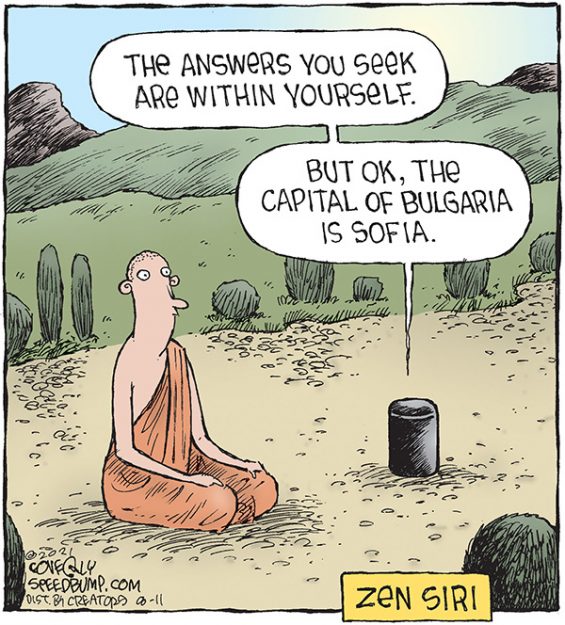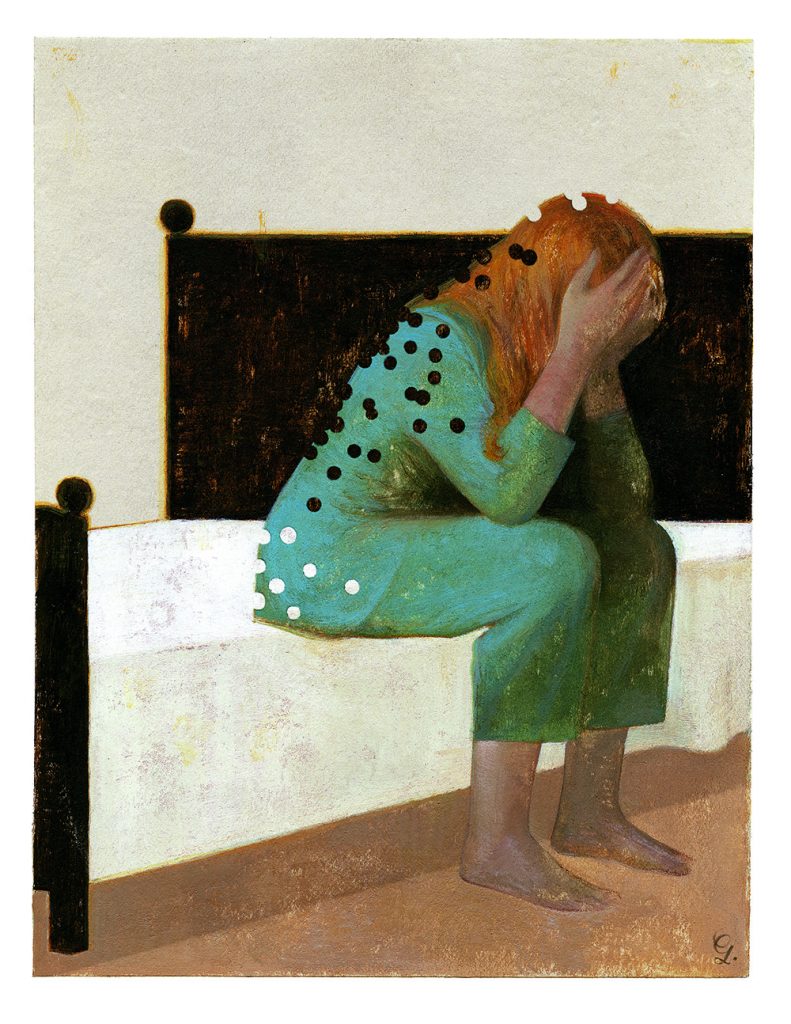On “Abortion and the First Precept” by Katy Butler (Winter 2024):
Thank you, Katy Butler, for this profound article. You articulated so many of the feelings that I experienced as a 25-year-old woman having an abortion in the midst of the sexual revolution. It was such a confusing time for me. I have never regretted my choice to have an abortion after the condom failed. I appreciated the brilliant way you explained the context in which we as women understand the responsibility of bringing a child into the world. I did a lot of babysitting as a teenager! Thinking about all this in light of the first precept was so helpful to me. Deep bows of gratitude for helping me revisit those difficult years with even more self-love and compassion.
–Sheila Conners
This was such a moving piece! Thank you, Katy Butler, for your courage and vulnerability in writing this contribution and to Tricycle for publishing it. As women, especially young women, lives can be messy, and context is important. We all make mistakes, and sometimes there are devastating consequences. Such a timely topic, when women’s freedom is so much under threat. Thank you from the bottom of my heart.
–Sheila Noonan
I want to give you and Katy Butler huge thanks for her interview on Tricycle Talks regarding her article on abortion and Buddhist ethics. Her podcast interview was so powerful—hearing her courageous and openhearted account of her own abortion experiences, as well as her insightful reflections on the research she did on this topic, was both deeply moving and affirming of women’s lived experience. I am so grateful to both Katy Butler and Tricycle magazine for giving Buddhist women a voice to express this perspective, especially at this time.
This conversation was truly one that reflected the Middle Way of Buddhism, and the wisdom that comes from experience and reflection. As a woman in my 80s who had a traumatic illegal abortion in my confused young years, I am now a strong advocate for legal, safe abortion.
As far as the attitude of Buddhist teachers, I recall an experience I had in 1973. Finding myself in San Francisco for a short while, I was delighted to find that Trungpa Rinpoche was giving a talk in a church there. His books had been important to me at a time when there was not much interesting discussion of Buddhism in print.
During the question period, at the end of the talk, a woman asked if Trungpa could ever support abortion. He replied that it depended on the circumstances, that if there were good reasons why it was very much not the right time for a woman to have a child, he would support her ending the pregnancy. I can’t remember if he talked about the child, but I found his answer unexpected and refreshing.
It was a very long time ago, and the wording of his answer is undoubtedly not accurate, but the gist of it is.
Thank you for these conversations; I look forward to them.
With metta, Lora
On “Signs of the Unseen” by Vanessa Zuisei Goddard (Winter 2024):
Vanessa Zuisei Goddard’s article was a beautiful reflection. Interestingly, a major idiom for “spiritual” or “divine” in Islam is the word “unseen.” The Qur’an addresses “those who believe in the unseen.” The most recent translation of Rumi’s discourses is titled “Signs of the Unseen.” Such signs of the unseen are not sight unseen but openings to certainty or embodied attitudes of mindfulness.
–Talat Halman

On “The Noble Truth of Pain” by Annalisa Rakugo Castaldo (Winter 2024):
Annalisa Rakugo Castaldo’s article resonated with something I came across in my practice over the last few years. I started my journey with the dharma sixteen years ago, having wandered into a local Zen Center not long after losing my job. Zen practice allowed me to just sit with what was happening, with a minimum of excuses and dreams about finding a way to fix my situation. Not that fixing the situation wasn’t something that occupied most of my waking hours, since I had a family to support. Zen allowed me to stare into the face of the monster of my circumstances, of my battered and bruised ego-self, with a minimum of mental proliferation. In other words, Zen helped me to keep from freaking out at the somewhat perilous condition in which I suddenly found myself, at least in terms that seem to have been mandated by the views and expectations of a large swath of the industrialized Western world.
Not only did I not want the second arrow of suffering, I wanted to remove the first arrow along with it. Who wouldn’t?
As fate, or luck, would have it, I later found myself gainfully employed and somewhat frustrated with my practice. As is my wont, I wandered into a local Theravada monastery and found that the teachings based upon the Pali canon brought the intellectual side of my practice into sharper focus. After several years of practicing with the doctrine of the elders, and with life seemingly comfortable again, I came across the realization, one day, that my practice had morphed into more of an escape, as Annalisa Rakugo Castaldo says, a way of managing the pain, keeping the circumstances of my life safe, rather than a way of just sitting with what is. I was surprised and strangely delighted by this realization. I thought I understood the first noble truth, but there it was again. I had turned the aspiration for liberation in the midst of dukkha into liberation from dukkha. Not only did I not want the second arrow of suffering, I wanted to remove the first arrow along with it. Who wouldn’t?
I’m reminded of the bodhisattva vow that we chanted at the Zen Center at the conclusion of each meeting: “Dharma gates are boundless….” The realization of the noble truth of dukkha is boundless. As one of my Theravada teachers expressed it, dukkha is woven into the tapestry of our lives. We encounter it in ever new circumstances, if we’re paying attention. This could be seen as a source of wonder. In the spirit of Thich Nhat Hanh, it occurred to me that we can welcome dukkha somewhat like welcoming an old friend. Ah, there you are again! However, it’s important to remain vigilant. It’s so easy to trade the admittedly sometimes terrifying wonder in the face of reality for the dull certainty of security.
–Brian Wohlin
Thank you for “The Noble Truth of Pain.” I currently am not experiencing physical pain, but your explanation and instructions seem to easily map onto mental/emotional suffering. Each moment of awareness and acceptance allows me to smile at my humanness and relax into the stream of my life. Thanks again.
–Susan Warren
On “I Am This Chaos” by Christopher Rivas (Tricycle Online, August 12, 2024):
This is one of the most powerful articles I have read here because it dares to speak so powerfully! Who has the courage these days to say, “Trump’s face is also my face? At the same time as a child’s face, or a Black face?” Because that’s the truth. It is all in us and so hard to own. If I want to serve, to eradicate suffering, I must be willing to look at this deeply.
Recently, I have had some humbling experiences, where others shared honestly with me my own blocks in my coaching practice. It was hard to let this feedback in, but I saw later how essential it was to my being of use to the world. I must be open to my darkest shadows as well as the light.
–Linda Wilk
To be considered for the next issue’s Letters to the Editor, send comments to editorial@tricycle.org, post a comment on tricycle.org, or visit us on social media. Letters are edited for clarity and length.
Thank you for subscribing to Tricycle! As a nonprofit, we depend on readers like you to keep Buddhist teachings and practices widely available.
